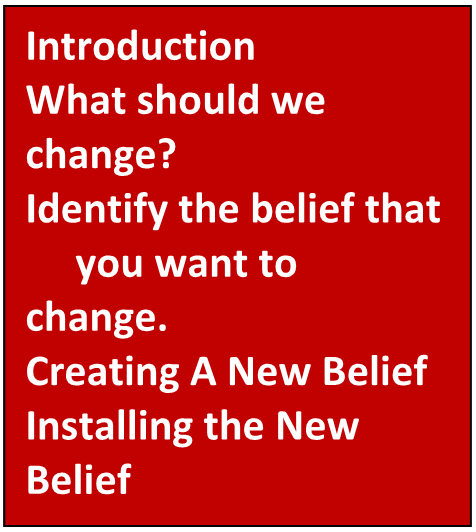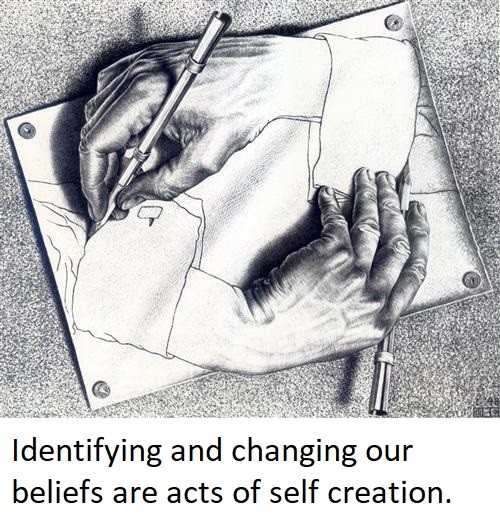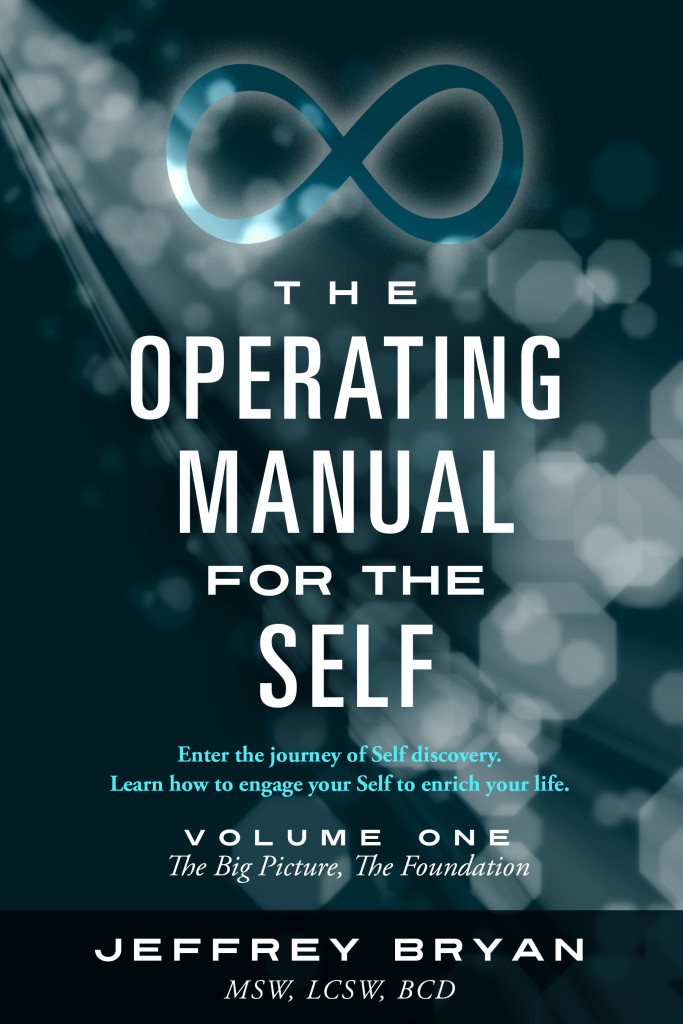Beliefs Part (IV): Changing Beliefs Pdf
INTRODUCTION
We are about to take a big step. Changing your beliefs can change your life in small, moderate, or immense ways, so take your time and persist with patience. This process works and is therefore a powerful method for taking charge of your life.
In this Letter we are considering the following process:
- Sense the need for change
- Decide on what you want to change
- Identify the beliefs involved
- Change the beliefs by creating and installing new beliefs
- Put the beliefs into actions
- Identify any resistance you encounter
- Change the beliefs that underlie the resistance
- Live and enjoy your new beliefs
WHAT SHOULD WE CHANGE?
We start with the question, “What in your life do you want to change?” If the desire for change comes as a response to something you have experienced, you are seeking to change your reactions. You have experienced a painful (“negative”) feeling that has created motivation for change. If the desire for change comes because you want to improve something in your life, you are seeking to create a new set of circumstances for yourself. You are experiencing the desire for something better.
When we want to accomplish change we begin by changing our thinking. Changing our feeling and acting—what we do, follows. Some changes are accomplished simply by making a new choice—we “change our mind,” Or, we decide on a new course of action and following through with that action does not present any significant problems. Other changes (like changing core beliefs for example), can be more complex. Changing our thinking then involves changing our beliefs. We need to consciously change a belief or beliefs, because without this step the change we seek cannot be accomplished.
IDENTIFY THE BELIEF THAT YOU WANT TO CHANGE
You have identified the painful feeling or feelings in your reaction to a situation. We know how to identify the beliefs behind a painful feeling. See the May 2018 letter https://iifsd.org/library/newsletters/may-2018-letter/. To identify the beliefs involved with a desire to create something new we start by planning a course of action, that may or may not involve goal setting. When faced with actions we want to take the question is, “What must I believe to act in this way?” We have also explored this question as a starting point in the May letter.
Having identified the change we seek and the beliefs involved, we are ready to change the belief.
CREATING A NEW BELIEF
When we simply “change our mind” we drop old beliefs. This can be done without full awareness of what we are doing. With the more complex change that involves changing beliefs we usually need a new belief to replace the belief we want to change. (The second step is to “install” the new belief making it part of us.) Here are some ways to create a new belief.
- Simply state the new belief.
- Understand the level and/or category of the belief. (see the May Letter to understand levels and categories of belief.) Seek a new belief at the same level or in the same category as the old belief.
- Ask the kind of questions that stimulate creating a new belief. Since coming up with a new belief is a creative process, there are no exact rules or procedures to follow. However, these questions stimulate your thinking and can put you in a creative frame of mind.
- Is this belief true? If not, what would be true?
- Is this belief true? What if the opposite of my belief is true? What would that belief be?
- Is this belief in my best interests? If not, what would be in my best interests?
- Does this belief make logical sense? If not, what would be more logical?
- What might be an alternative belief?
- What is the feeling that goes with this belief? How does the belief create the feeling?
- Why do I think this way?
- Where did I get this belief from?
- What behavior has this belief led me to? What has this behavior gotten me?
- Where is this belief leading me? If I don’t like where it is heading, where would I prefer to go and what belief will lead me there?
- Is this what I want? If not, what do I want?
- What belief will give rise to a more productive behavior, a behavior that would get me more of what I want?
- What alternative beliefs could I consider and choose to hold? How would I put these beliefs into action?
- One of Steven Covey’s 7 Habits of Highly Effective People is to begin with the end in mind. Think about the end result that you want, a new situation, an accomplishment, or a new way of thinking and feeling. Ask: “What must I belief to generate the action that will enable me to accomplish what I want?”
- On a piece of paper draw a vertical line down the center making two columns. On the left side write down the old belief, on the right side write down a new belief. Writing it down in this way gives you a visual picture of what you are creating.
- Find a person who has accomplished what you are seeking to accomplish. They have some beliefs that are different from yours. Ask them what they believe that has enabled them to accomplish what you want to accomplish.
- Our beliefs are stored in our subconscious mind. Instruct your subconscious mind to generate the new belief for you. When you go to sleep at night state, “As I go to sleep I instruct my subconscious mind to give me a new belief within the next 48 hours.” Or, use an affirmation, a statement which also gives instructions to the subconscious mind. State, “When I wake up tomorrow I will have the new belief I seek.” Go to bed with a pen and paper next to your bed, expecting that you will wake up with a new belief. When you wake up, write down the new belief, or anything else that is on your mind. You will wake up with a new belief or an important note to yourself. If you don’t have the new belief, a stimulus for the belief will present itself that day or within the next few days. Be open to the stimulus and look for it.
INSTALLING THE NEW BELIEF
When you “install” the new belief in your subconscious mind, you make it a part of you. It is not something you have to think about. The belief operates automatically. You have integrated it into your belief system. This is easy with some beliefs and difficult with others. The difficulty occurs when resistance is encountered. Here are some ways to install a new belief and overcome resistance.
- Affirmations and visualizations are statements to our subconscious mind about what we want. They “program” (like a computer) the subconscious mind. By programing the subconscious in this way we prepare ourselves the use our new beliefs and to develop new thinking, feeling, and acting when the situation arises. Affirmations are statements of expectation about the way you want things to be. They can take the form of: I am . . . and am becoming more. . ..
- I am loving and am becoming more loving.
- I am determined to get a new job and am becoming more determined.
- Visualizations use your imagination to picture yourself enacting what you want.
- I visualize/see myself kissing my partner more often as an expression of my increased love.
- I visualize myself sitting at my new desk at my new job and feeling excited.
- If you see a situation coming up where you need to be able to act on your new beliefs, rehearse them by imagining how you will behave with the new belief.
- I have a meeting with my boss tomorrow. I have changed the belief that I am intimidated by my boss to the belief that I have the courage to be myself and have something of value to contribute to a discussion. I see myself feeling calm, listening attentively, and being articulate in my self-expression.
- Tell someone, who is supportive of your growth, about your new belief. Saying it out loud and listening to yourself can make it more real. Getting validation and encouragement from another person is helpful.
Point of Empowerment: Once you have changed your beliefs by creating new beliefs and installing them, your life experience will change if you have completed the process successfully.
LIVING YOUR NEW BELIEFS—PUTTING THE BELIEFS INTO ACTION
You have changed beliefs and installed them. You will be presented with situations, either external life situations or the way you are thinking and feeling, that challenge your new beliefs. Be aware of your experience—you’re thinking, feeling, acting, and reacting. Is your experience reflecting your new beliefs? If not start with examining yourself for resistance—some reluctance to accepting and acting on the new beliefs. Resolve any resistance you discover by identifying and changing the beliefs that give rise to the resistance. (See February and March 2017 Letters about resistance. https://iifsd.org/library/newsletters/) If you don’t sense resistance, redo the changing belief process, not necessarily every detail, but at least reviewing the steps.
CONCLUSION
We have detailed the steps of a complicated process, complicated because human beings are complex beings. However, with practice the process can become easier. As a therapist or counselor, using the process with clients makes it easier to use with yourself. Next month we will examine some expansive beliefs and use them to illustrate the process of changing beliefs.

The Operating Manual for the Self presents many new and innovative ideas that can challenge and expand your belief system.
